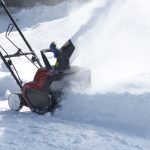Lawn sprayers can be an easy and convenient way to apply fertilizer, pesticides, and more to your lawn. However, if they are improperly calibrated, they can be detrimental to your lawn – they can even be deadly to your lawn. Before you are tempted to just dump a chemical into your sprayer and take off, you need to figure things out, or else you may cause more problems than you may fix.
Problems from an Improperly Calibrated Sprayer
A sprayer that hasn’t been calibrated will generally go one of two ways. It will either end up applying less than it should, or more than it should.
Under-application
If your sprayer is calibrated for too low of an output, you will spend your time spraying, only to find out that you haven’t applied enough. This will mean that you’ll need to make another round to get the proper application – meaning you’ll be spending twice as much time compared to if you had it calibrated correctly the first time around. The other option is hoping the under-application is good enough to hold the lawn over until your next scheduled spray.
Over-application
If you’re putting out too high of a concentration of what you’re spraying – pesticide, herbicide, liquid fertilizer – you run the risk of poisoning your lawn and killing it off. Chemicals can cause burn spots, yellow areas, and other issues up to and including permanently destroying your lawn. While under-application can be irritating, over-application is downright dangerous for your lawn.
How to Calibrate Your Sprayer
There are two simple methods to calibrate your sprayer at home. Granted, there are pieces of equipment that can calibrate your sprayer, but for the individual homeowner who only has to calibrate one sprayer only once or twice a year, they’re not worth the cost.
Option 1: For a larger lawn where a tow-behind sprayer is used, you’ll want to calculate the gallons per acre (GPA). This is done by multiplying the gallons per minute (GPM) by 5940, then dividing that by the steady miles per hour of the tow vehicle (MPH) multiplied by the nozzle spacing, in inches (NSI). So, the final equation would be GPA = (GPM x 5940) divided by (MPH x NSI).
For instance, if you have 10 inches between nozzles, are traveling at 4 miles per hour, and are putting out .3 gallon per minute, your GPA would be 44.55. You can then change the GPM or MPH to raise or lower the GPA.
Option 2: For a smaller lawn where you will likely use a backpack sprayer, measure 340 square feet of lawn and spray it with water, timing how long it takes. Then, spray into a container for the same length of time and measure the ounces. As 340 square feet is 1/128 of an acre, and 1 ounce is 1/128 of a gallon, the amount of ounces you catch will be the same as gallons you would use in an acre. If you catch 30 ounces, that means your GPA will be 30. From there, you can simply adjust your spray rate, and recalibrate until you get the GPA you are looking for.
Proper calibration will help you apply the appropriate amount of chemicals as needed, without harming your lawn through over-application or waste your time with under-application. Once you have properly calibrated your sprayer, you will only need to recalibrate every so often. If you keep track of what settings and nozzles produce specific GPA rates, you’ll be set for the future.





